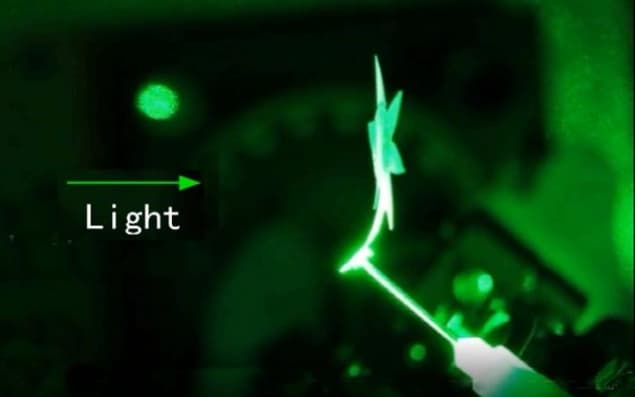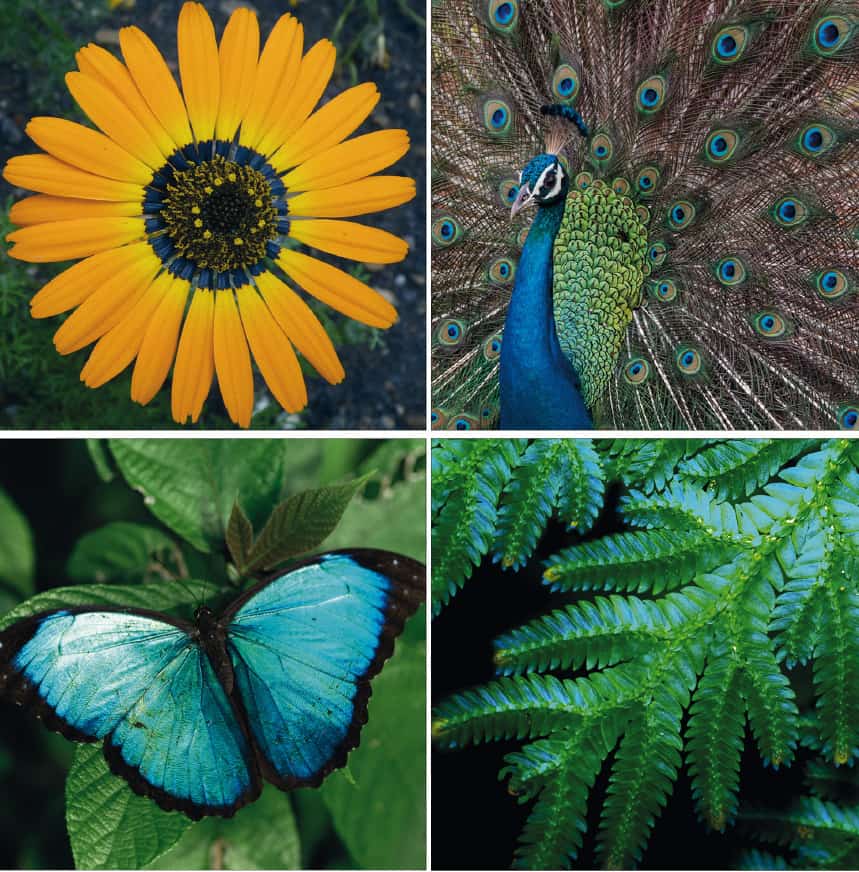
An artificial “sunflower” that autonomously bends, folds and twists itself to optimize the amount of light it receives could be a key ingredient in intelligent solar cells of the future. The device is made from a biopolymer-based photonic crystal and its developers say that future versions might be able to track the Sun across the sky, just as real sunflowers do.
Photonic crystals are nanostructured materials with a refractive index that varies on a length scale similar to the wavelength of visible light. This periodic variation produces a so-called “photonic band gap” that affects how photons propagate through the material, allowing light at some frequencies to be absorbed (thereby heating the material) while other frequencies are reflected. The angle at which the lights hits the crystal also affects which frequencies are absorbed.
Double-layer structure
The photonic material designed by Fiorenzo Omenetto and colleagues at Tufts University and Northwestern University in the US consists of two layers. The top layer is made of an opal-like film of silk fibroin doped with light-absorbing gold nanoparticles (AuNPs). Underneath this is a silicon-based polymer, polydimethylsiloxane (PDMS).
The team, which also includes researchers at the University of Pavia in Italy, chose silk fibroin for its flexibility and promising optical properties as well as its negative coefficient of thermal expansion (CTE). The latter means that silk fibroin contracts when heated and expands when cooled – unlike most materials, which have a positive CTE and do the opposite. PDMS, importantly, has a high positive CTE and expands rapidly when heated. Hence, when the bilayer photonic crystal is exposed to laser light, it bends as the PDMS expands and the silk layer contracts.
Bending with the light
The team made their photonic crystal more reflective by adjusting the size of the unit cells within the crystal. Omenetto explains that they did this by constructing patterns in the silk layer using a lithography technique that involves either exposure to UV light or applying stencils to the material and then exposing them to water vapour. Thanks to these nanostructured patterns, the silk layer can either enhance or weaken the interaction between the gold nanoparticles and the laser light, depending on the angle at which the laser beam strikes it.
Together, these design features allow the material to bend, fold and twist in ways that depend on the geometry of the patterns and the wavelength of the incident laser beam. They also, crucially, enable the material to track the path and angle of a light source. The researchers demonstrated this function by fabricating a photonic “sunflower” with solar cells integrated into the silk fibroin-PDMS bilayer. The resulting device curls towards the light source as the source moves, similar to the way that a real sunflower tracks the Sun as different sides of its stem elongate at different times of the day.
Light-tracking devices
Omenetto explains that the team’s device keeps the angle between the solar cells and the laser beam nearly constant, maximizing the cells’ light-to-energy conversion efficiency as the laser moves. Such wireless, light-responsive, heliotropic (Sun-tracking) systems could be used to make improved solar cells, he says.

A flower’s nano-powers
The researchers also made a self-folding box and a “butterfly” with wings that opened and closed in response to light. Spurred on by their results, which they detail in Nature Communications, they plan to adapt their optomechanical actuator so that it works in different parts of the electromagnetic spectrum. “We also hope to make sunlight-tracking devices that can be used outside of the laboratory,” Omenetto tells Physics World.
"light" - Google News
April 09, 2021 at 03:35PM
https://ift.tt/2PRl0Nt
Photonic-crystal 'sunflower' follows the light – Physics World - physicsworld.com
"light" - Google News
https://ift.tt/2Wm8QLw
https://ift.tt/2Stbv5k
Bagikan Berita Ini














0 Response to "Photonic-crystal 'sunflower' follows the light – Physics World - physicsworld.com"
Post a Comment